A standard golf ball typically has between 300 to 500 dimples. The exact number varies by manufacturer and model.
Golf ball dimples play a crucial role in enhancing airflow. How many dimples on a golf ball, These small indentations reduce air resistance and increase lift, allowing the ball to travel farther and more accurately. Manufacturers design dimples in various patterns and depths to optimize performance. Understanding the science behind dimples can help golfers choose the right ball for their game.
This choice of How many dimples on a golf ball can significantly impact their overall performance on the course. Whether you are a professional or an amateur, knowing about dimples can improve your understanding of golf equipment. This knowledge can lead to better decision-making and enhanced game experience.
History Of Dimpled Golf Balls
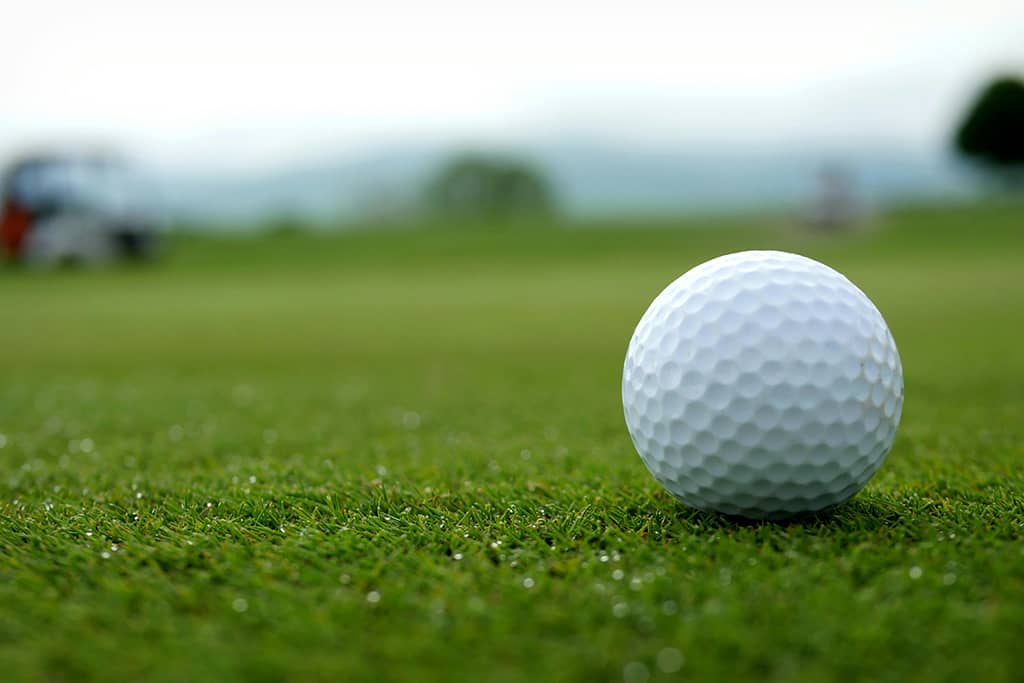
Golf balls have not always had dimples. Early designs were simple and smooth. The evolution of how many dimples are on a golf ball dimpled golf balls has an interesting history. This change in how many dimples on a golf ball greatly impacted the game of golf.
Early Smooth Sphere Designs
Initially, how many dimples on a golf ball made golf balls from wood? These balls were smooth and solid. Later, feather-filled leather balls called “featheries” became popular. These balls were also smooth and round.
Golfers introduced the “gutta-percha” ball in the 19th century. Made from sap, these balls were durable. Players noticed that older, scuffed balls performed better. This led to the idea of changing the ball’s surface.
Introduction Of Dimples
By the early 1900s, manufacturers experimented with different textures. They discovered that indentations improved the ball’s flight. These indentations, or dimples, reduced air resistance. Dimples allowed the ball to travel farther and straighter.
In 1905, someone patented the first dimpled of how many dimples on a golf ball. This design Changed the game. Today, most golf balls have between 300 and 500 dimples.
The number of dimples can vary how many dimples on a golf ball, but the benefits are clear. Dimples make the game more exciting and dynamic.
Science Behind how many dimples on a golf ball
Golf balls have unique features that help them perform better. The dimples on a golf ball are not just for looks. They play a crucial role in the ball’s flight and performance. Let’s dive into the science behind these dimples.
Airflow And Flight
How many dimples on a golf ball affect its airflow? Airflow is the study of how air moves around objects. The dimples create a thin layer of air that sticks to the ball’s surface. This layer helps reduce drag.
Reduced drag allows the ball to travel farther. Dimples also create lift. Lift makes the ball rise and stay in the air longer. The combination of reduced drag and increased lift improves the ball’s flight.
Dimple Pattern Engineering
Engineers design how many dimples on a golf ball pattern carefully. Each pattern is unique and serves a purpose. The number, shape, and depth of the dimples can vary.
| Pattern Type | Number of Dimples | Effect on Flight |
|---|---|---|
| Traditional | 300-400 | Balanced flight |
| Advanced | 400-500 | Extended distance |
Usually How many dimples on a golf ball means better airflow. Engineers test different patterns to find the best performance. They use wind tunnels and computer simulations for testing. This helps them create the perfect golf ball.
Standard Dimple Counts
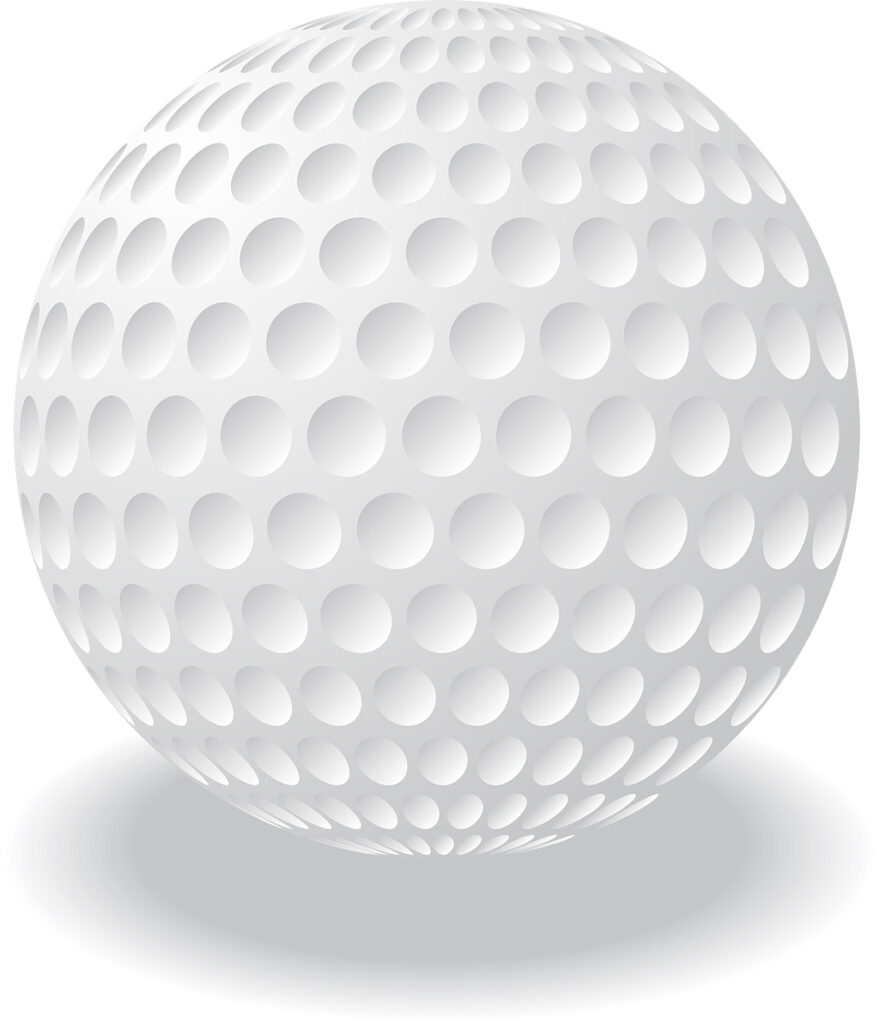
Golf balls come with a specific number of dimples. These dimples help the ball fly smoothly through the air. The number of dimples can affect the ball’s performance. Let’s explore the typical range and popular model of how many dimples on a golf ball.
Typical Range Of Dimples
Most golf balls have between 300 to 500 dimples. This range of how many dimples on a golf ball provides a balance of lift and drag. Balls with fewer dimples may not fly as far. Balls with more dimples might have more control.
Here is a table showing the typical range of dimples on golf balls:
| Minimum Dimples | Maximum Dimples |
|---|---|
| 300 | 500 |
Popular Models And Their Counts
Different brands have different dimple counts of how many dimples on a golf ball. Here are some popular models:
- Titleist Pro V1: 352 dimples
- Callaway Chrome Soft: 332 dimples
- Bridgestone Tour B330: 330 dimples
- TaylorMade TP5: 322 dimples
Each model has its unique design. The dimple count can affect the ball’s flight and control. Choosing the right ball can improve your game and how many dimples a golf ball needs.
Variations In Dimple Designs
Golf balls are not all the same. Their dimples come in many designs. These designs affect how many dimples on a golf ball. Let’s explore the differences in dimple designs.
Size And Depth Differences
The size and depth of dimples on a golf ball vary. Different sizes and depths change how many dimples on a golf ball move through the air.
Larger dimples create less drag. This makes the ball fly farther. Smaller dimples increase spin. This helps control the ball’s direction.
Depth also plays a key role. Shallow dimples reduce air resistance. Deep dimples provide more lift.
Golf ball makers balance size and depth for the best performance. This is why balls have different dimple designs.
Symmetrical Vs. Uneven Patterns
Symmetrical or uneven patterns can arrange dimples and how many dimples on a golf ball too. Symmetrical patterns mean an even spread of dimples.
This creates a balanced flight. The ball will fly straight and true. Most golf balls use symmetrical dimple patterns.
Uneven patterns of how many dimples on a golf ball are less common. They place dimples in uneven ways. This can add spin or other effects.
Some golfers prefer these balls for special shots. Airflow designs are more complex to make.
Choosing the right dimple design depends on your playing style. Experiment with how many dimples on a golf ball to find your best fit. Understanding dimple designs can improve your game.
Impact On Golf Ball Performance
The number of dimples on a golf ball plays a crucial role in its performance. Dimples affect how many dimples on a golf ball move through the air. They influence spin rate, control, distance, and trajectory.
Spin Rate And Control
Dimples help a golf ball create spin. Spin rate is important for control. Higher spin rates allow for better control of the ball. Lower spin rates make the ball roll more after landing.
Let’s look at a table showing the relationship between dimples and spin rate:
| Number of Dimples | Spin Rate | Control Level |
|---|---|---|
| 300-350 | High | Excellent |
| 350-400 | Medium | Good |
| 400-450 | Low | Moderate |
Distance And Trajectory
How many dimples on a golf ball also affects the distance a golf ball can travel. More dimples generally mean a higher trajectory. Fewer dimples can lead to a lower trajectory.
Here are the key points:
- More dimples: Higher trajectory, more distance.
- Fewer dimples: Lower trajectory, less distance.
Players can choose golf balls based on how many dimples on a golf ball and their playing style. Understanding the impact of dimples can help improve your game.
Manufacturing Process
The process of manufacturing a golf ball is both intricate and fascinating. It involves precision and attention to detail to ensure each ball performs optimally. A critical aspect of this process is the creation of the dimples on the golf ball.
Creating The Outer Layer
Manufacturers typically use materials like urethane or Surlyn for the outer layer of golf balls because they’re durable and perform well.
First, heat the material until it becomes pliable. Then, mold it into a spherical shape. This forms the base of the golf ball’s outer layer.
Once created, cool and harden the sphere. This ensures the ball maintains its shape during play.
Precision In Dimple Molding
The dimples on a golf ball are critical for its airflow They help the ball travel farther and more accurately.
In this step, how many dimples on a golf ball use a mold containing the pattern for the dimples? The mold places the golf ball, pressing dimples into its surface.
Each dimple must be of uniform depth and size. This consistency ensures the ball’s performance is reliable.
After molding the dimples, we perform a quality check on the ball. This step ensures there are no defects in the dimples or the outer layer.
The final product is a golf ball with a precise number of dimples, ready for the game.
Table of Contents
Regulations And Standards
Golf ball dimples are not just for show. Authorities regulate how many dimples are on a golf ball to ensure fairness. Different governing bodies set the rules. These rules help keep the game consistent for everyone.
Governing Bodies And Rules
The main governing bodies for golf are the USGA (United States Golf Association) and the R&A (Royal and Ancient Golf Club of St Andrews). Both bodies work together to set the rules for golf balls. They ensure all golf balls meet specific standards.
Both USGA and R&A have strict guidelines. These guidelines cover the number of dimples. They also include how many dimples on a golf ball and the shape and depth of the dimples. These standards help maintain fairness in the game.
Limits On Dimple Characteristics
The number of dimples on a golf ball usually ranges between 300 and 500. The average number is about 336 dimples. Regulators also dictate the depth of each dimple. Most dimples have a depth of around 0.010 inches.
The shape of dimples can vary how many dimples on a golf ball, but they must be symmetrical. The most common shapes are circular and hexagonal. We don’t allow irregular shapes. This ensures that the ball performs consistently.
Here is a summary of the key dimple characteristics:
| Characteristic | Standard |
|---|---|
| Number of Dimples | 300-500 |
| Average Depth | 0.010 inches |
| Shape | Circular or Hexagonal |
These standards ensure that all golf balls perform similarly. This helps maintain fairness and consistency in the game of how many dimples on a golf ball.
Custom Dimple Designs
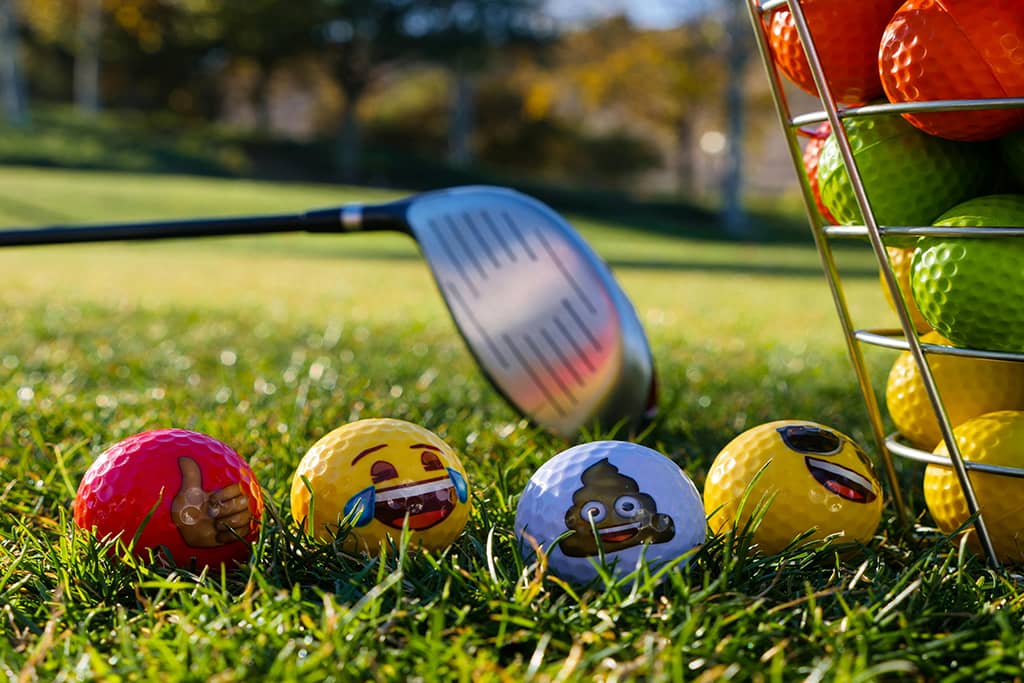
Every golf ball has dimples. These small indentations affect the ball’s flight. Custom dimple designs can change how the ball moves. This is important for many golfers.
Some golfers need a ball with a specific design. This can help them play better. Custom designs are not just for looks. They can make a big difference in a game.
Bespoke Golf Balls For Professionals
Professional golfers often use bespoke golf balls. Manufacturers make these balls to fit their playing style, carefully planning each dimple. The design of how many dimples on a golf ball can help with distance and control.
For example, a pro golfer might need a ball that flies higher. A custom dimple pattern can help with this. It can also reduce drag. This makes the ball go farther.
| Feature | Benefit |
|---|---|
| High dimple count | More distance |
| Unique dimple shape | Better control |
Personalized Golf Ball Options
Even casual golfers can get personalized golf ball options. This makes the game more fun and personal. You can choose the dimple design that fits your needs.
Some companies offer many choices of how many dimples on a golf ball. You can pick the number of dimples. You can also choose the shape of the dimples. This can help you play better.
- Choose dimple count
- Select dimple shape
- Pick a custom color
With so many options, you can find the perfect ball for your game. Custom dimple designs make a difference for every golfer.
Dimple Pattern Innovations
The dimple pattern on a golf ball is more than just a design. It affects how the ball flies. Innovations in dimple patterns have changed the game. Let’s dive into the latest advancements in how many dimples on a golf ball and what the future holds.
Recent Technological Advancements
Recent technological advancements have transformed dimple designs. Engineers use computer simulations to test new patterns. These simulations help in understanding how dimples affect the ball’s flight.
3D printing has also played a role. It allows for precise and complex dimple designs. These designs of how many dimples on a golf ball help in optimizing the ball’s airflow.
Here are some key advancements:
- Hexagonal dimples for better airflow
- Dual dimple designs for enhanced lift and reduced drag
- Airflow patterns to stabilize the ball in flight
Future Of Dimple Design
The future of dimple design looks promising. Researchers are exploring nano-technology to create even more efficient patterns of how many dimples on a golf ball. This could lead to golf balls that travel farther and straighter.
Artificial Intelligence (AI) is another exciting area. AI can help in designing dimples that adapt to different playing conditions. Imagine a golf ball that changes its dimples based on the wind speed!
Here are some future trends:
- Self-adjusting dimples
- Eco-friendly materials
- Adjustable dimple patterns for individual players
In summary, dimple pattern innovations are pushing the boundaries of golf. From technological advancements to futuristic designs, the possibilities are endless.
Myths And Misconceptions
Golf balls are fascinating. Many myths and misconceptions surround them by how many dimples on a golf ball. One popular topic is the number of dimples on a golf ball. Let’s explore these myths and uncover the truth.
Common Dimple Fallacies
There are many myths about golf ball dimples. One common fallacy is that all golf balls have the same number of dimples.
This is not true. Different brands and models have different dimple counts of how many dimples on a golf ball. Some golf balls have 300 dimples, while others may have up to 500.
Another myth is that more dimples mean a better golf ball. This is also false. The number of dimples affects the ball’s flight.
But it’s not the only factor of how many dimples on a golf ball are needed. The shape and depth of the dimples also matter.
A third misconception is that the dimples are just for decoration. In reality, dimples reduce air resistance. They help the ball fly farther and straighter.
Fact-checking Golf Ball Theories
Let’s fact-check some popular golf ball theories. Some believe that all professional golfers use balls with a specific dimple count. This is not true. Pro golfers choose balls based on feel, control, and distance, not just dimple count.
Another theory is that golf balls with fewer dimples are for beginners. This is incorrect. Both beginners and pros use balls with varying dimple counts. It’s more about personal preference and playing style.
Some claim that dimples increase the ball’s weight. This is a myth. Dimples are shallow and do not significantly add weight. They primarily influence how many dimples on a golf ball move through the air.
Testing And Analysis
Understanding the number of dimples on a golf ball involves rigorous testing and analysis. This ensures that the ball performs optimally. Golfers conduct different tests both in laboratories and on the field.
Laboratory Experiments
Laboratories use precise instruments to measure the golf ball’s performance. They check the number of dimples, their depth, and their pattern. These factors affect the ball’s flight and aerodynamics.
Scientists often use wind tunnels to simulate real playing conditions. They observe how many dimples on a golf ball design influence the ball’s trajectory.
A typical experiment may involve comparing two balls. One with 300 dimples and another with 400 dimples. The goal is to see which ball travels farther and straighter.
Here is a comparison table:
| Number of Dimples | Distance Traveled (yards) | Flight Stability |
|---|---|---|
| 300 | 250 | Moderate |
| 400 | 270 | High |
The table shows how many dimples on a golf ball can lead to better performance. This is not always the case. The arrangement of dimples also plays a crucial role.
Field Testing By Golfers
Field testing involves professional and amateur golfers. They test the golf balls in real-world conditions. This helps to gather feedback on how the ball performs during actual play.
Golfers often report on:
- Ball control
- Distance
- Spin rate
Golfers’ feedback is crucial. It helps manufacturers understand how different dimple designs affect gameplay. They may conduct multiple test rounds to ensure the accuracy of how many dimples on a golf ball.
Field testing provides valuable insights. It complements the laboratory experiments. Both are essential to determine the optimal number of dimples on a golf ball.
Brand-specific Dimple Technologies
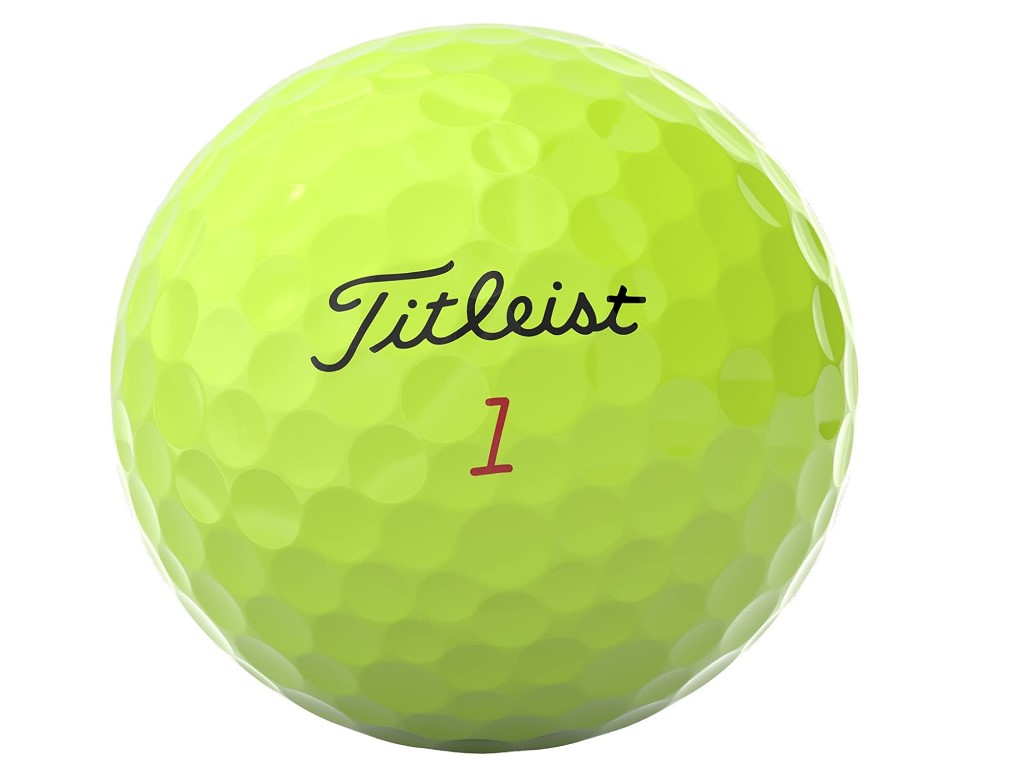
The number of dimples on a golf ball significantly impacts how many dimples on a golf ball and also its performance. Different brands use unique dimple technologies to optimize the ball’s flight. Understanding these technologies can help golfers choose the right ball for their game.
Leading Manufacturers’ Approaches
Leading golf ball manufacturers like Titleist, Callaway, and Bridgestone have invested heavily in dimple technology. Each brand employs distinct strategies to enhance the ball’s airflow.
Titleists focus on a combination of shallow and deep dimples. This approach maximizes lift and reduces drag. The Titleist Pro V1, for example, has 352 dimples.
Callaway designs hexagonal dimples to reduce drag. The Callaway Chrome Soft features 332 dimples, optimizing speed and control.
Bridgestone employs a seamless dimple design. This creates how many dimples on a golf ball’s consistent flight pattern. The Bridgestone Tour B XS has 330 dimples, ensuring precision and distance.
Comparing Brand Innovations
When comparing dimple technologies and how many dimples on a golf ball, it’s clear each brand has its strengths. Titleists focus on a balanced approach, combining different dimple depths. Callaway emphasizes reducing drag with its unique hexagonal design. Bridgestone aims for consistency with seamless dimples.
| Brand | Dimple Count | Unique Feature |
|---|---|---|
| Titleist | 352 | Combination of shallow and deep dimples |
| Callaway | 332 | Hexagonal dimples |
| Bridgestone | 330 | Seamless dimple design |
These innovations offer golfers various options of how many dimples on a golf ball. Each brand’s technology caters to different playing styles and preferences.
Understanding these differences can help golfers make informed choices. Selecting the right golf ball can improve your game significantly.
Environmental Factors
Environmental factors significantly impact These innovations and offer golfers various options of how many dimples on a golf ball and the performance of golf balls. The number of dimples on a golf ball is essential in adapting to various environmental conditions. Understanding how weather and playing conditions affect dimple performance can enhance your game.
Effect Of Weather On Dimple Performance
Weather conditions play a crucial role in the effectiveness of golf ball dimples. Different weather elements like wind, rain, and temperature can alter the ball’s flight and spin.
Wind: Strong winds can push the ball off course. More dimples can help stabilize the ball’s flight in windy conditions.
Rain: Wet conditions can reduce friction, affecting the ball’s spin. Dimples help maintain control and reduce water resistance.
Temperature: Cold weather can make the ball harder and less responsive. A higher number of dimples can help how many dimples on a golf ball maintain performance in colder temperatures.
Adapting Dimples To Playing Conditions
Adapting the number and design of dimples to different playing conditions can optimize performance. Manufacturers design golf balls with various dimple patterns for specific conditions.
- Dry Conditions: Fewer dimples can reduce drag and increase distance.
- Wet Conditions: More dimples can help maintain control and reduce water resistance.
- Windy Conditions: Dimples with different depths can help stabilize flight.
Understanding these factors can help you choose the right golf ball for your game.
Choosing The Right Dimple Count
Choosing the right dimple count on a golf ball can impact your game. Each dimple affects how many dimples on a golf ball move through the air. Understanding the factors involved helps you select the best golf ball for your play style.
Factors To Consider
Several factors influence the ideal dimple count for a golf ball. These include:
- Ball Speed: Faster balls benefit from more dimples for stability.
- Spin Rate: More dimples can increase spin, affecting control and flight.
- Weather Conditions: Windy conditions might require balls with specific dimple designs.
- Course Type: Different courses may favor certain dimple counts.
These factors help you understand what to look for in a golf ball. Consider each one carefully to find the best match for your needs.
Matching Dimples To Your Play Style
Matching the dimple count to your play style can enhance how many dimples on a golf ball performance. Here are some tips for different play styles:
- Control Players: Opt for balls with more dimples to improve spin and control.
- Distance Seekers: Fewer dimples can help achieve longer distances.
- Balanced Play: A moderate dimple count offers a mix of distance and control.
Understanding your play style helps you choose the right dimple count. This ensures you get the best performance from your golf ball.
| Play Style | Recommended Dimple Count |
|---|---|
| Control Players | More than 400 |
| Distance Seekers | Less than 400 |
| Balanced Play | Around 400 |
Choosing the right dimple count can make a noticeable difference. By aligning the dimple count with your play style, you can enhance your game and enjoy better results.
Golf Ball Fitting
Golf ball fitting helps players find the best ball for their game. The right ball can improve distance, control, and overall performance. Each golfer has unique needs, and a fitting session identifies those needs.
Importance Of Ball Selection
Choosing the right golf ball is crucial. A good ball can enhance how many dimples on a golf ball your playing experience. It impacts distance, spin, and feel. Beginners and pros both need the right ball for their skill level.
- Distance: Certain balls travel farther.
- Spin: Spin affects control and stopping power.
- Feel: The feel of the ball matters for short games.
Understanding your game helps in selecting the best ball. Different balls suit different swing speeds and styles. A fitting session can pinpoint the perfect ball for you.
Dimple Count In Fitting Sessions
Dimples on a golf ball affect its flight. Most golf balls have between 300 and 500 dimples. The number and pattern of dimples influence airflow
| Dimple Count | Effect on Ball |
|---|---|
| 300-350 | More distance, less control |
| 351-400 | Balanced distance and control |
| 401-500 | Less distance, more control |
Fitting sessions consider dimple count. This helps match the ball to your playing style. A ball with more dimples can offer better control. Fewer dimples can provide more distance.
Golfers should experiment with different dimple counts. Finding the right balance can improve your game. Professional fitting sessions can guide you in this process.
Dimples And Golf Ball Longevity
Dimples on a golf ball are not just for show. They play a crucial role in performance and longevity. Understanding the relationship between dimples and golf ball lifespan can enhance your game.
Wear And Tear Over Time
Golf balls endure a lot during play. Each strike, roll, and bounce affect their surface. Over time, dimples can wear down due to these impacts on how many dimples on a golf ball.
Worn dimples reduce the ball’s airflow efficiency. This can affect your shot’s distance and accuracy. Keeping an eye on dimple wear helps you know when to replace your ball.
Maintaining Dimple Integrity
Proper maintenance extends the life of your golf ball. Store balls in a cool, dry place to prevent damage. Avoid leaving them in extreme heat or cold.
Regularly inspect your golf balls. Check for signs of dimple wear and tear. Clean your balls after each round to remove dirt and debris from the dimples.
| Tip | Benefit |
|---|---|
| Store in cool, dry place | Prevents damage |
| Inspect regularly | Identify wear early |
| Clean after each round | Maintains dimple integrity |
Golf Ball Retrieval And Recycling
Golf ball retrieval and recycling have become essential in the golfing world. The process helps reduce waste and makes the sport more eco-friendly. Golfers lose thousands of golf balls on courses every year.
Retrieving and recycling these balls benefits both the environment and golfers. Recycled balls can offer a cost-effective alternative to buying new ones.
Impact Of Dimples On Recycled Balls
Dimples on a golf ball significantly affect its performance. Recycled balls with well-maintained dimples can perform almost as well as new ones. Dimples help with aerodynamics and distance.
They create lift and reduce drag. A ball with damaged dimples will not fly straight. It is essential to assess the condition of dimples during the recycling process.
Quality Assessment Of Used Balls
Quality assessment is crucial in golf ball recycling. Recycled balls go through a stringent inspection process. Inspectors check for cracks, cuts, and the condition of dimples. We discard damaged balls, while we clean and repackage good ones.
| Inspection Criteria | Importance |
|---|---|
| Cracks | High |
| Cuts | Medium |
| Dimples Condition | High |
| Cleanliness | Medium |
We grade recycled golf balls based on their condition. The grading system helps golfers choose the right ball for their game. Recycling facilities typically categorize recycled balls into three grades:
- Grade A: Excellent condition, almost like new.
- Grade B: Good condition, minor imperfections.
- Grade C: Fair condition, visible wear and tear.
By understanding the grading system, golfers can make informed choices. Choosing the right grade can enhance their game while saving money.
The Role Of Dimples In Golf Culture
Dimples on a golf ball are not just functional; they are iconic. They play a significant role in how many dimples on a golf ball culture. The sport’s history and imagery deeply root these tiny indentations. Their influence extends beyond the game itself.
Iconic Status In Golf Imagery
The dimpled golf ball is a symbol of the sport. It is instantly recognizable. Its unique texture makes it stand out.
Photographers often capture the ball’s dimples in close-up shots. This highlights their intricate design. The dimples have become a visual shorthand for how many dimples on a golf ball.
Paintings, logos, and other artworks frequently feature the dimpled ball. This reinforces its iconic status.
The dimples symbolize precision and skill. They remind viewers of the game’s technical aspects. This imagery connects fans and players alike.
Dimples In Golf Merchandising
Merchandisers use dimple patterns to attract customers. Golf balls, clothing, and accessories often feature dimple designs. These patterns are popular because they are easily recognizable how many dimples on a golf ball are needed. They evoke a sense of realism and tradition.
Golf brands use dimple motifs on hats, shirts, and bags, symbolizing quality and attention to detail. These designs draw both amateurs and pros, boosting sales of golf merchandise.
Here is a table showcasing popular golf merchandise featuring dimples:
| Product | Description | Popularity |
|---|---|---|
| Golf Balls | Standard dimple patterns for optimal performance | High |
| Golf Caps | Caps with dimple designs for sun protection | Medium |
| Golf Shirts | Shirts featuring dimpled patterns for style | Medium |
| Golf Bags | Bags with dimpled textures for durability | High |
Dimples are more than just physical features of how many dimples on a golf ball want. They are cultural symbols. They encapsulate the essence of how many dimples on a golf ball. They make golf merchandise more appealing to fans and players.
The Future Of Golf Ball Dimples
The future of golf ball dimples is an exciting topic. Advances in technology promise to change the way golf balls perform. Both professionals and amateurs are curious about these innovations. This section explores emerging technologies and predictions for next-gen dimple patterns.
Emerging Technologies
New technologies are making their way into how many dimples on a golf ball design. One key area is artificial intelligence (AI). AI helps in designing more efficient dimple patterns. These patterns can improve flight and control.
Another exciting technology is 3D printing. 3D printing allows for more complex dimple designs. This technology can create unique patterns that traditional methods can’t achieve.
Tiny tech is also playing a role. It allows for better materials and coatings. These materials can make the ball more durable and improve performance.
Predictions For Next-gen Dimple Patterns
The future dimple patterns will be more customized. Golfers could soon have balls tailored to their playing style. Imagine having a ball designed just for your swing!
Another prediction is the use of dynamic dimple patterns. These patterns could change based on conditions. For example, they could adjust for wind or humidity.
We might also see multi-layered dimple designs. These designs could offer better airflow. They could provide more lift and less drag.
Finally, data-driven designs will become more common. Using data from professional games, companies can create the most efficient dimple patterns. This would benefit all levels of players.
| Technology | Benefits |
|---|---|
| AI | Efficient dimple patterns |
| 3D Printing | Complex dimple designs |
| Nanotechnology | Better materials and coatings |
These advancements promise a bright future for how many dimples on a golf ball need a golfer. The game of golf will never be the same again.
Frequently Asked Questions
How Many Dimples Can A Golf Ball Have?
A golf ball typically has between 300 and 500 dimples. The exact number varies by manufacturer and model.
How Many Dimples Are On A Titleist Pro V1 Golf Ball?
A Titleist Pro V1 golf ball has 388 dimples. This design optimizes airflow for better flight and performance.
How Many Dimples Does A Wilson Golf Ball Have?
A Wilson golf ball typically has 300 to 500 dimples, depending on the model. This design enhances airflow and distance.
What Are The Dimples On A Golf Ball Called?
“Golf balls feature dimples, which we call ‘dimples’.” ” They reduce air resistance and enhance lift, improving the ball’s flight.
How Many Dimples On A Standard Golf Ball?
A standard golf ball has between 300 and 500 dimples.
Why Do Golf Balls Have Dimples?
Dimples reduce air resistance and increase lift, improving the ball’s flight and how many dimples on a golf ball.
What Is The Purpose Of Dimples On A Golf Ball?
Dimples help control the ball’s trajectory and distance.
How Do Dimples Affect A Golf Ball’s Flight?
Dimples create a thin turbulent layer of air, reducing drag.
Are All Golf Ball Dimples The Same Size?
No, dimple sizes vary to optimize performance and airflow.
Do More Dimples Mean A Better Golf Ball?
Not necessarily; the pattern and size of dimples matter more.
Conclusion
Understanding how many dimples on a golf ball and the number of dimples on a golf ball can improve your game. The typical count ranges from 300 to 500. Each dimple plays a role in flight and control. Next time you play, take note of your ball’s dimples.
They might just be the key to your perfect shot.

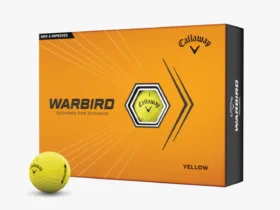
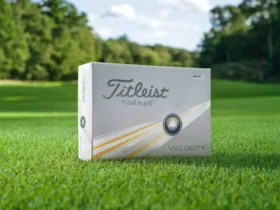
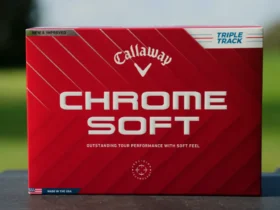
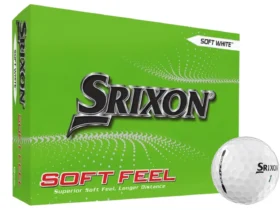
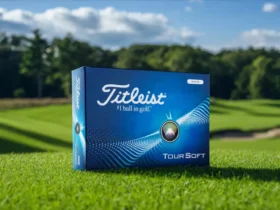
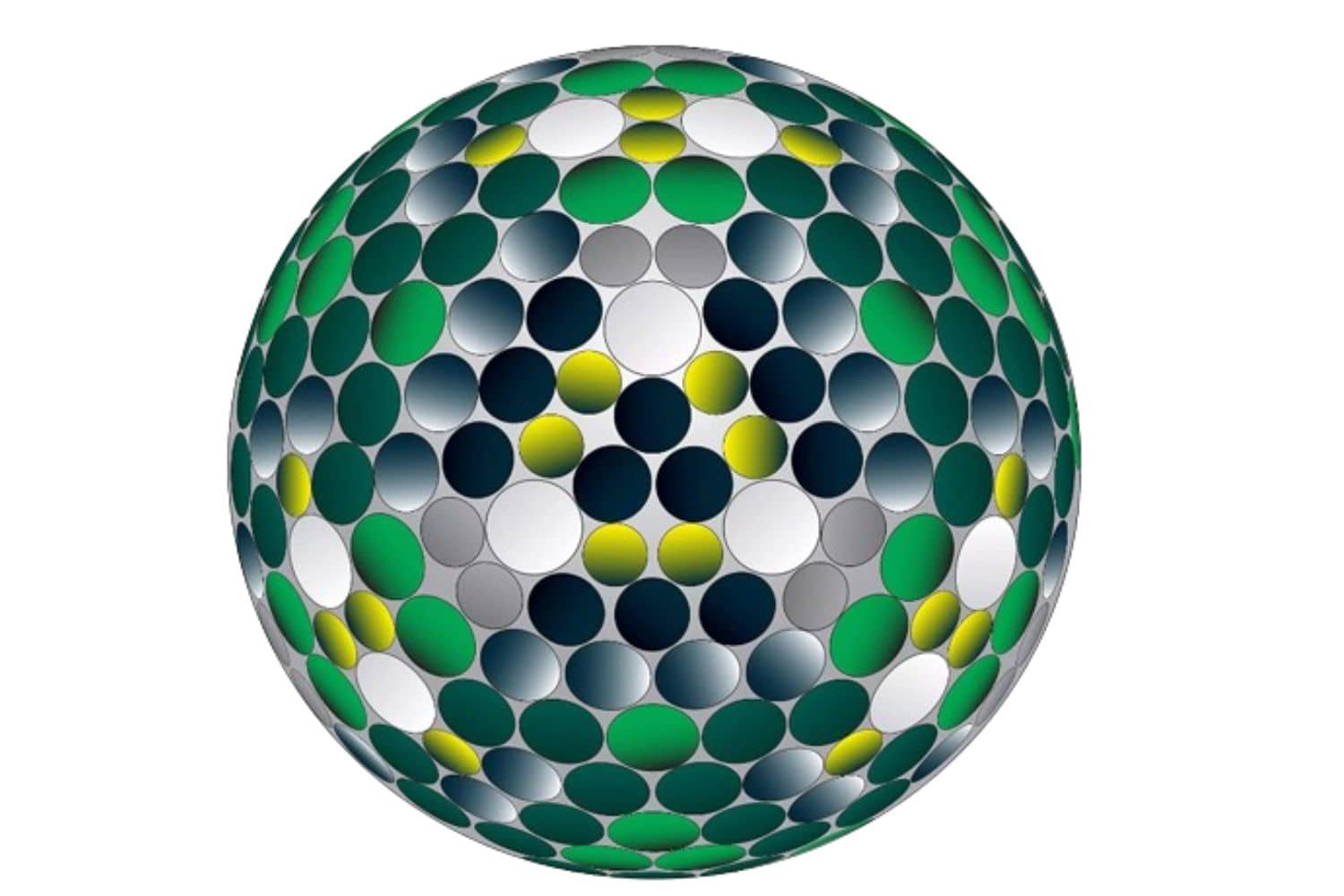
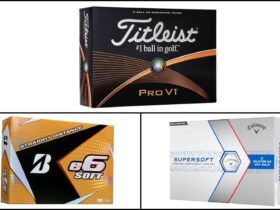

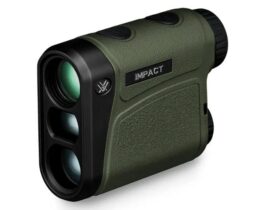


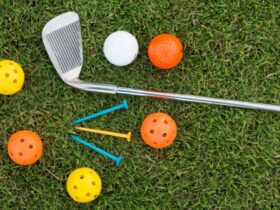
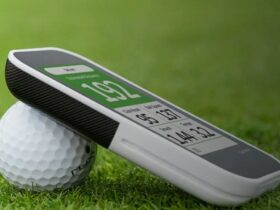
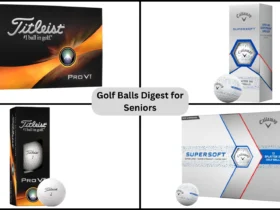

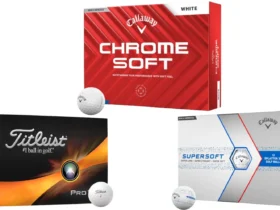
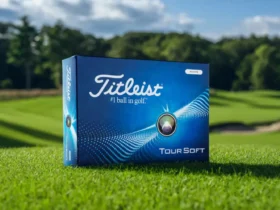
Leave a Reply